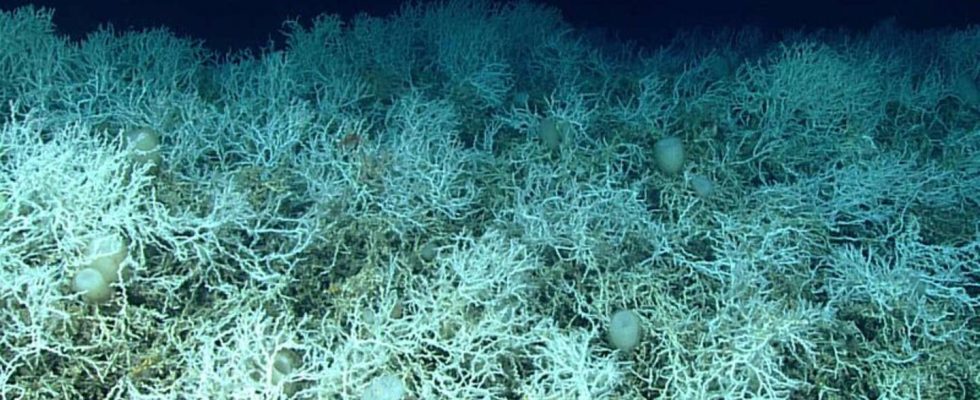Nature
Huge cold-water coral reef discovered off US east coast
Dense fields of Lophelia pertusa, a common reef-building coral, are found on the hills of the Blake Plateau. photo
© NOAA Ocean Exploration, Windows to the Deep 2019/dpa
An area slightly larger than Mecklenburg-Western Pomerania is covered with a cold-water coral reef off the east coast of the USA. The discovery involved years of preparatory work.
It is said to be one of the largest deep-sea coral reefs ever discovered in the world. In previous studies of the area, coral hills had already been found near the coast and in shallower waters. But only after the so-called Blake Plateau has been fully mapped at a depth of 500 to 1000 meters will it be known “how extensive this habitat is and how many of these coral hills are connected to each other.”
The discovery was preceded by ten years of systematic mapping of the area and more than 20 exploratory dives. The results of the research project, in which NOAA and other US authorities were involved, were published on January 12th in the scientific journal “Geomatics”.
What are cold water corals?
According to the researchers, cold-water corals grow at temperatures between 4 and 14 degrees in the deep sea, where no sunlight reaches. The so-called cnidarians feed on suspended matter in the water.
So far, cold-water coral reefs have been discovered off the coasts of at least 41 countries, the study said. Scientists assumed it would be even more widespread, but most of the deep sea had not yet been explored and mapped.
The reefs in the depths are said to grow slowly and are therefore vulnerable to physical damage from human activities. The biggest threats to cold-water corals include fishing with bottom trawling nets, the extraction of raw materials from the deep sea and the laying of underwater cables and pipelines.

